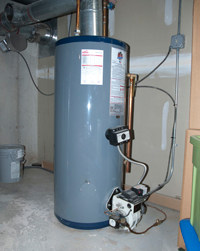Just how do you really feel in relation to How to Maintain Your Water Heater & Prolong its Life?

Hot water is important for everyday comfort, whether it's for a refreshing shower or washing dishes. To ensure your hot water system runs efficiently and lasts much longer, normal maintenance is essential. This article provides sensible ideas and insights on how to maintain your home's warm water system to stay clear of disturbances and costly repairs.
Introduction
Maintaining your home's hot water system may appear complicated, yet with a couple of straightforward actions, you can ensure it operates smoothly for years to come. This guide covers everything from understanding your hot water system to DIY maintenance tips and knowing when to call in professional help.
Importance of Maintaining Your Hot Water System
Regular upkeep not just expands the life-span of your hot water system however likewise guarantees it operates successfully. Overlooking upkeep can result in lowered efficiency, greater energy costs, and even early failure of the system.
Indicators Your Hot Water System Demands Maintenance
Recognizing when your hot water system requires focus can avoid significant problems. Keep an eye out for signs such as irregular water temperature level, unusual sounds from the heating unit, or rusty water.
Recognizing Your Hot Water System
Prior to diving right into maintenance jobs, it's helpful to recognize the fundamental parts of your warm water system. Generally, this consists of the water heater itself, pipelines, anode rods, and temperature level controls.
Monthly Upkeep Tasks
Normal regular monthly checks can aid catch small issues prior to they intensify.
Purging the Water Heater
Purging your water heater gets rid of sediment build-up, enhancing performance and lengthening its life.
Checking and Changing Anode Rods
Anode rods stop corrosion inside the tank. Evaluating and changing them when worn is critical.
Examining and Readjusting Temperature Setups
Adjusting the temperature level setups guarantees optimum performance and security.
Do It Yourself Tips for Maintenance
You can do several maintenance jobs yourself to keep your warm water system in top condition.
Looking for Leaks
Frequently check pipelines and connections for leakages, as these can bring about water damage and higher costs.
Testing Pressure Alleviation Valves
Testing the pressure safety valve guarantees it functions properly and protects against excessive pressure accumulation.
Shielding Pipelines
Shielding hot water pipes minimizes warmth loss and can conserve energy.
When to Call an Expert
While do it yourself upkeep is beneficial, some issues require expert know-how.
Facility Issues Needing Expert Aid
Examples consist of significant leakages, electric troubles, or if your water heater is regularly underperforming.
Routine Expert Upkeep Advantages
Professional maintenance can include extensive evaluations, tune-ups, and making sure conformity with safety and security criteria.
Verdict
Normal upkeep of your home's warm water system is essential for efficiency, longevity, and cost savings. By following these tips and knowing when to seek professional aid, you can make certain a trustworthy supply of hot water without unexpected interruptions.
How to Maintain an Instant Hot Water Heater
Before tinkering with your hot water heater, make sure that it’s not powered on. You also have to turn off the main circuit breaker and shut off the main gas line to prevent accidents. Also turn off the water valves connected to your unit to prevent water from flowing into and out of the appliance. 2. When you’re done, you have to detach the purge valves’ caps. These look like the letter “T” and are situated on either side of the water valves. Doing so will release any pressure that has accumulated inside the valves while at the same time avoid hot water from shooting out and burning your skin. 3. When the purge valves’ caps are removed, you have to connect your hosing lines to the valves. Your unit should have come with three hoses but if it didn’t, you can purchase these things from any hardware or home repair shops. You can also get them from retail stores that sell water heating systems. Read the user’s manual and follow it to complete this task properly. When the hosing lines are connected, open the purge port’s valves. 4. You should never use harsh chemical cleaners or solutions when cleaning your unit. Make use of white vinegar instead. It should be undiluted and you’ll probably use about 2 gallons. 5. Now flush your water heater. This task should probably take about 40 minutes. We can’t give you specific directions for this because the procedure is carried out depending on the type, model and brand of your heater. With that being said, refer to the user’s manual. 6. When you’re done draining the unit, you have to turn off the purge port valves again. Remove the hosing lines that you earlier installed on each of the water valves. Put the valve caps (purge port) back in their respective places and be very careful so as not to damage the rubber discs that are found inside these caps. 7. Now that everything’s back in place, check your user’s manual again to find out how to reactivate your water heating system. 8. Once it is working, turn one of your hot water faucets on just to let air pass through the heater’s water supply pipes. Leave the tap on until water flows smoothly out of it. https://www.orrplumbing.com/blog/2014/september/how-to-maintain-an-instant-hot-water-heater/

I recently found that post on What Kind of Maintenance Do Water Heaters Need? when doing a lookup on the internet. Loved our content? Please quickly share it. Help someone else discover it. Thanks a lot for going through it.
Call Today